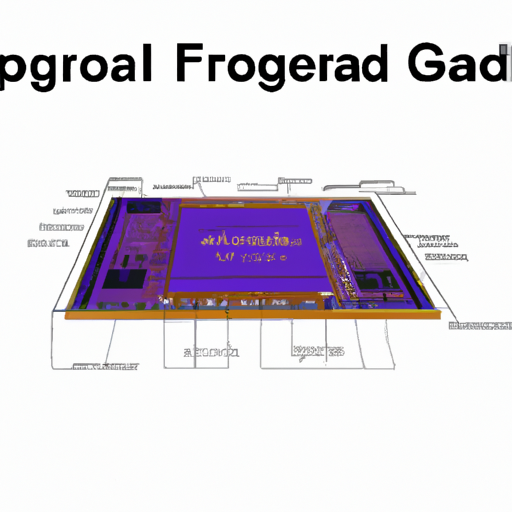Core Functional Technologies of FPGAs
1. Reconfigurability: FPGAs can be reprogrammed to perform different functions after deployment, allowing for updates and optimizations without the need for new hardware. This feature is particularly beneficial in industries where requirements may change over time, enabling developers to adapt their systems without incurring significant costs.
2. Parallel Processing: FPGAs can execute multiple operations simultaneously, making them ideal for applications that require high throughput and low latency. This capability is crucial in scenarios such as real-time data processing, where multiple data streams need to be handled concurrently.
3. Custom Hardware Acceleration: FPGAs can be tailored to specific tasks, providing significant performance improvements over general-purpose processors for certain workloads. This customization allows for the implementation of specialized algorithms that can run more efficiently than on traditional CPUs or GPUs.
4. Low Power Consumption: Compared to traditional CPUs and GPUs, FPGAs can be more power-efficient for specific applications, especially in embedded systems. This efficiency is vital in battery-operated devices and applications where thermal management is a concern.
5. Integration with Other Technologies: FPGAs can be integrated with CPUs, GPUs, and other components to create hybrid systems that leverage the strengths of each technology. This integration allows for optimized performance across various tasks, enhancing overall system capabilities.
Articles Highlighting FPGA Technology
1. "Understanding FPGAs: A Comprehensive Guide": This article provides an overview of FPGA architecture, programming languages (like VHDL and Verilog), and design tools. It also discusses the evolution of FPGAs and their role in modern computing, making it a valuable resource for both beginners and experienced developers.
2. "FPGA vs. ASIC: Which is Right for Your Project?": This article compares FPGAs and ASICs (Application-Specific Integrated Circuits), discussing the trade-offs in terms of cost, performance, and development time. It helps project managers and engineers make informed decisions based on their specific needs.
3. "The Future of FPGAs in AI and Machine Learning": This article explores how FPGAs are being used to accelerate AI and machine learning workloads, highlighting their ability to handle large datasets and complex algorithms efficiently. It discusses real-world applications and the potential for future developments in this area.
4. "FPGA Design Best Practices": This article outlines best practices for designing with FPGAs, including tips on optimization, debugging, and testing. It serves as a practical guide for engineers looking to improve their design processes and outcomes.
Application Development Cases
1. Telecommunications: FPGAs are widely used in telecommunications for signal processing, data encoding/decoding, and protocol handling. For example, they can be used in 5G base stations to manage high data rates and low latency requirements, enabling faster and more reliable communication.
2. Automotive: In the automotive industry, FPGAs are used for advanced driver-assistance systems (ADAS), enabling real-time processing of sensor data for features like lane detection, collision avoidance, and adaptive cruise control. Their ability to process data from multiple sensors simultaneously is crucial for safety and performance.
3. Medical Imaging: FPGAs are employed in medical imaging systems, such as MRI and ultrasound machines, to process large volumes of data quickly and efficiently, improving image quality and reducing scan times. This capability enhances diagnostic accuracy and patient outcomes.
4. Aerospace and Defense: FPGAs are used in radar and communication systems for their ability to handle complex signal processing tasks in real-time, making them suitable for applications in military and aerospace environments. Their reliability and performance in harsh conditions are critical for mission success.
5. Data Centers: FPGAs are increasingly being used in data centers for accelerating workloads such as data analytics, machine learning inference, and network processing, providing a balance of performance and energy efficiency. Their ability to offload specific tasks from CPUs can lead to significant improvements in overall system performance.
Conclusion
FPGAs are a powerful technology that offers flexibility, performance, and efficiency across a wide range of applications. Their ability to be reconfigured and optimized for specific tasks makes them an attractive choice for developers looking to implement custom hardware solutions. As technology continues to evolve, the role of FPGAs in various industries is likely to expand, driving innovation and performance improvements. The ongoing advancements in FPGA technology, including increased integration with AI and machine learning, promise to unlock even more potential in the future.






